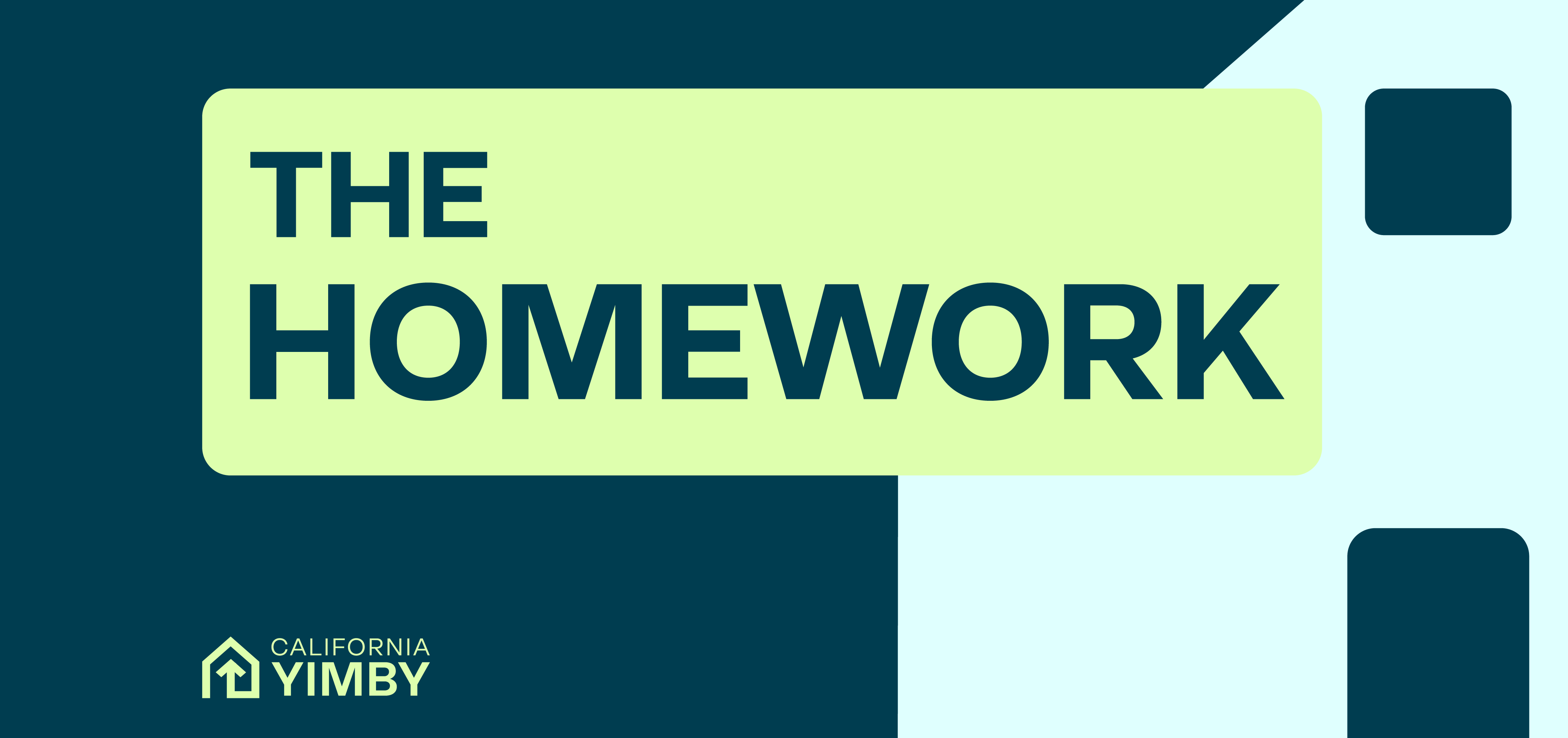The HomeWork: July 15, 2020

Welcome to the July 15, 2020 Main Edition of The HomeWork, the official newsletter of California YIMBY — legislative updates, news clips, housing research and analysis, and the latest writings from the California YIMBY team.
News From Sacramento
In a sign of the challenges California continues to face with the coronavirus, the Legislature was forced to shut down last week when at least two legislators and several staffers tested positive for COVID-19. They plan to return on July 27th. We’re all praying for a speedy recovery for these hard-working public servants.
But the added, unplanned recess is further crimping the legislative agenda, and is forcing leadership to reduce the number of bills they’re considering due to constraints on time and physical space. Legislative committees must meet in person, and on the floor of each house (the Senate and Assembly). These committees would traditionally be able to get through the hundreds of bills under consideration by holding 4 to 5 hearings at a time — but the need to sanitize the hearing rooms between every hearing constrains each house to only one hearing at a time.
As a result, bill authors are likely to be forced to reduce the total number of housing bills this year. The upshot: We’ll need a year of housing production legislation, and we’ll be pushing to make that happen next year. YIMBY voices will be critical in making sure that the year lost to COVID-19 is followed by a year of housing legislation that responds to the scale and urgency of California’s housing shortage and affordability crisis.
To learn how to support our efforts, contact Louis Mirante at louis@cayimby.org.
Housing Research and Analysis
White Flight and Concentrated Poverty Still Dominate Most U.S. Cities
American neighborhoods are rapidly changing—and in our grimly unequal society, the poorest bear the worst of this change. In “American Neighborhood Change in the 21st Century,” the Institute of Metropolitan Opportunity at the University of Minnesota has published a massive, detailed report with an interactive map examining the twin forces of gentrification and poverty that are crushing urban regions across the United States.
Key takeaways:
- White flight hasn’t stopped. In the last two decades, it has greatly accelerated economic disparities in our cities.
- Gentrification and displacement in low-income neighborhoods is highly concentrated in a few growing coastal cities. The rest of the country just doesn’t see as much of the specific problems that San Francisco, Los Angeles, and New York are facing.
- Concentrated poverty and neighborhood decline are by far the most prevalent form of change our cities are experiencing, and the nation’s urban poor are more likely to live in declining urban areas than gentrifying ones.
The Math on Fourplexes: 1.2 Million Homes
A new study from the UCLA Lewis Center for Regional Policy Studies and MapCraft makes a compelling case for legalizing fourplexes statewide. While market conditions vary, the potential of allowing fourplexes in single-family neighborhoods is significant — and could make a major dent in the housing shortage and affordability crisis.
Key takeaways:
- Rezoning for a minimum of four units on every parcel has the potential to provide 1.2 million new homes throughout California. That’s huge.
- New legislation permitting Accessory Dwelling Units (ADUs) in backyards opens up potential for 1.5 million new homes.
- Market potential varies widely throughout the state, both in terms of how many parcels are feasible for fourplex development in each city, and how many units such a rezoning would provide.
Houser Headlines

- If Black Lives Matter, then City Zoning Laws Must Change
- Downey mayor has a challenger in City Council race
- Planning a more equitable SoCal: Rex Richardson
- Housing Needs Cycle Should Match Population and Jobs
- Connecticut has an opportunity to tackle housing segregation
- Injustice by design: Confronting the embedded racism of America’s cities
- How to End Anti-Blackness in Cities
- Black Californians’ Housing Crisis, by the Numbers
YIMBY Social – Top Posts

Share the good word
We welcome your ideas and feedback — send story tips and ideas to Homework@cayimby.org.
Did someone forward this email to you? Sign up to get it here.


